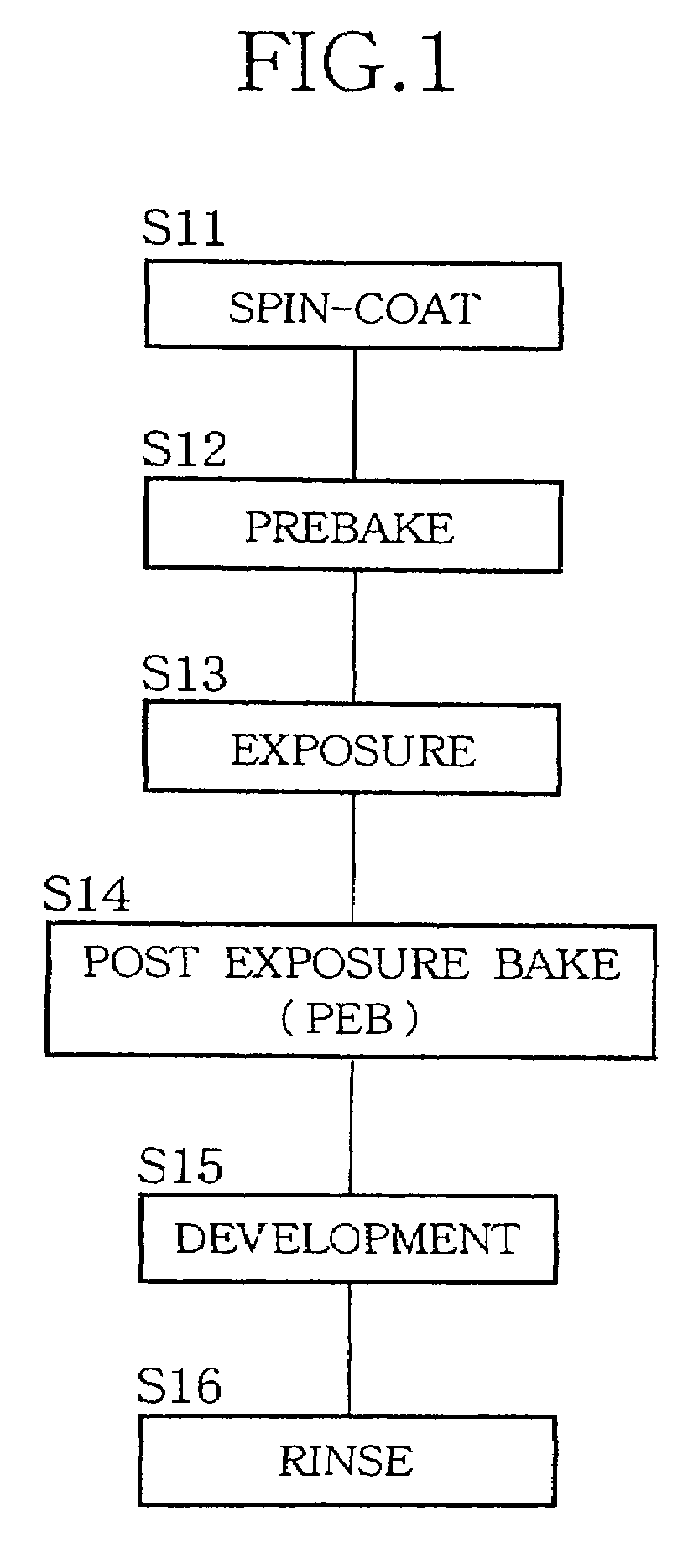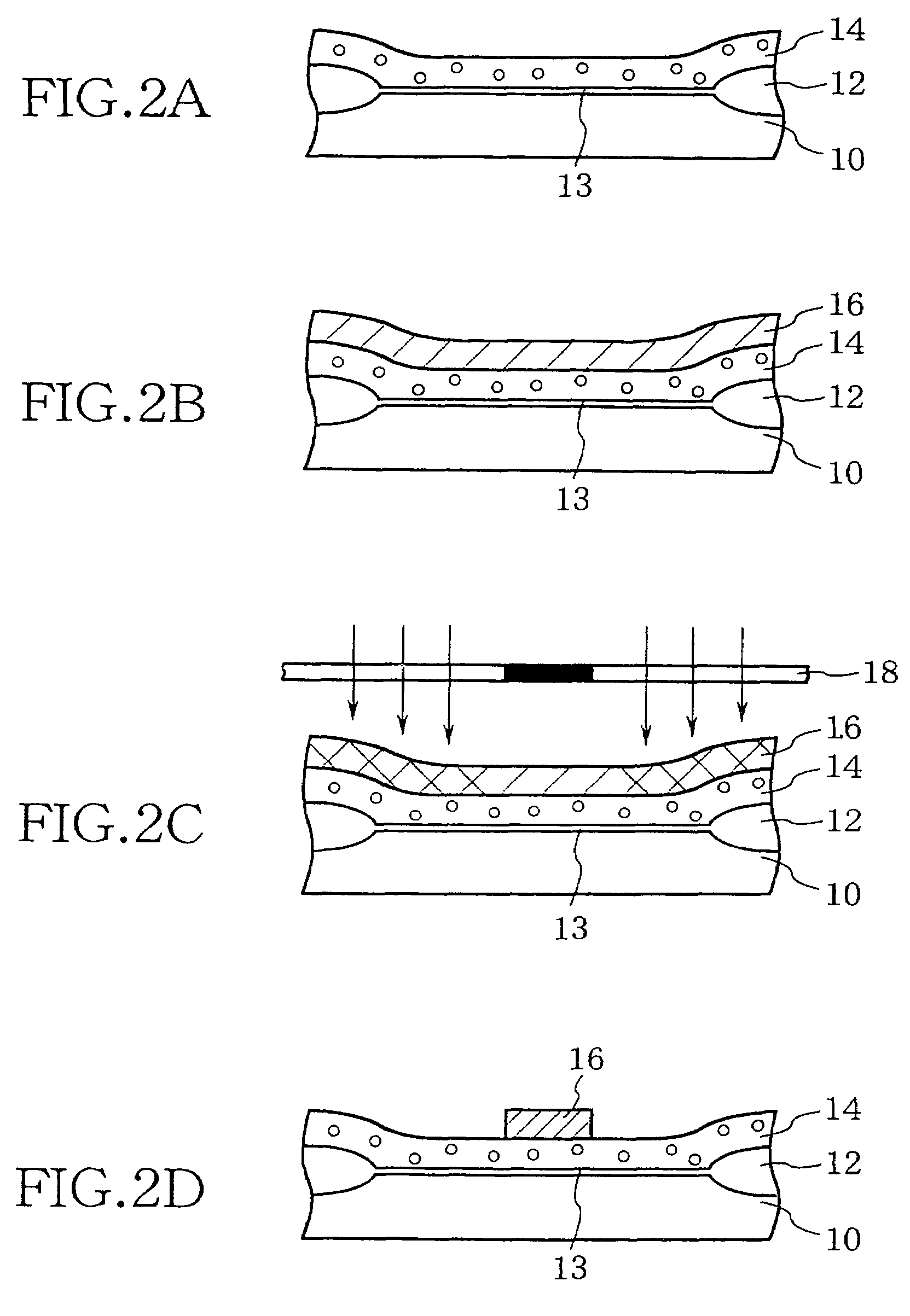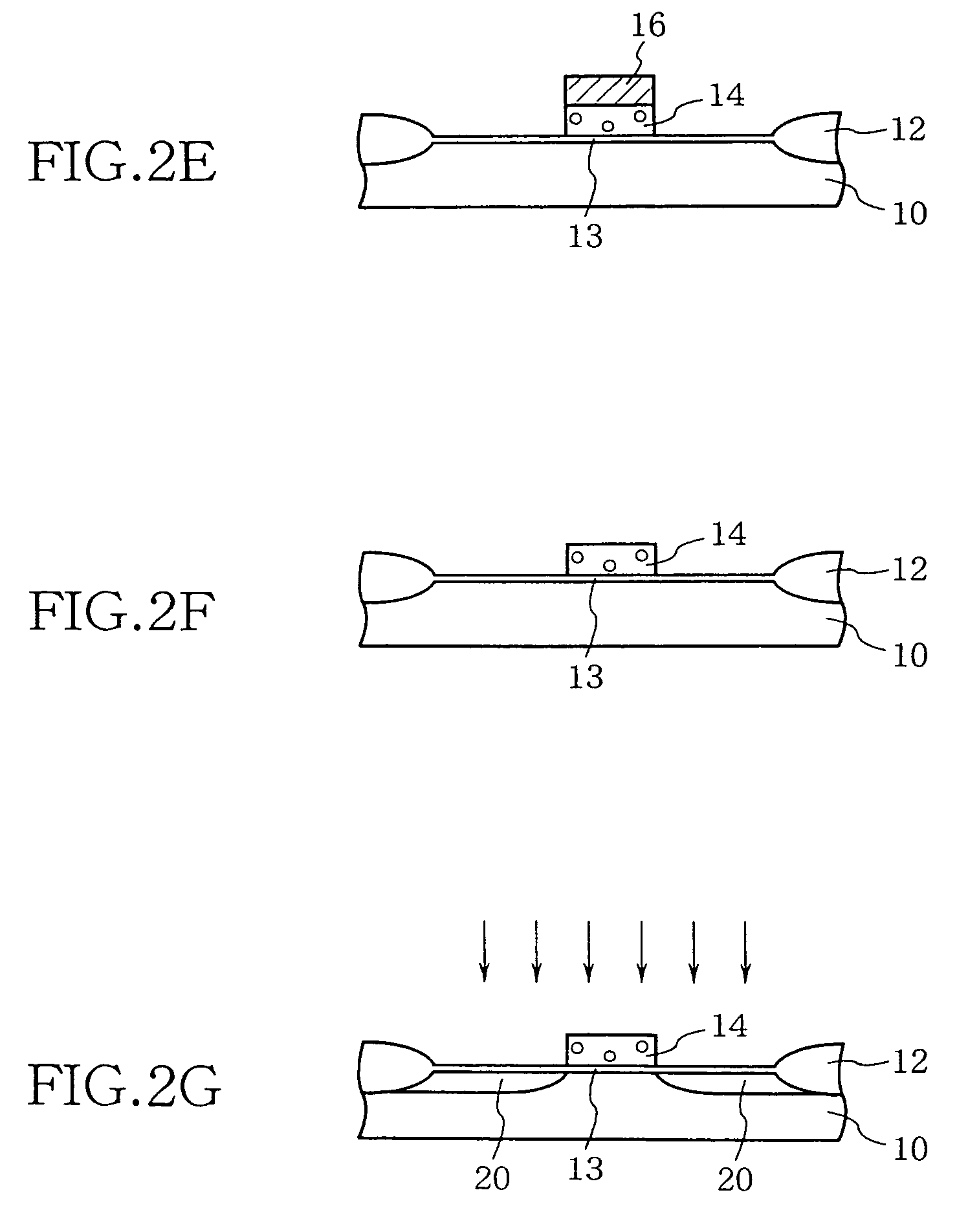Radiation sensitive material and method for forming pattern
a technology of radiation sensitive materials and patterns, applied in the direction of photosensitive materials, instruments, photomechanical equipment, etc., can solve the problems of lack of dry etching resistance, poor transparency at krf wavelength, and total opaqueness, and achieve good adhesion, good transparency and etching resistance. , the effect of high sensitiveness
- Summary
- Abstract
- Description
- Claims
- Application Information
AI Technical Summary
Benefits of technology
Problems solved by technology
Method used
Image
Examples
example 1
[0261]Adamantyl methacrylate monomer, and t-butyl acrylate monomer were loaded by 1:1, and a 5 mol / l toluene solution was prepared. 20 mol % of AIBN (azoisobutylo nitrile) expressed by the following structural formula
[0262]
was added as a polymerization initiator. Then polymerization was reacted at 80° C. for 8 hours, and precipitation purification followed. And a copolymer expressed by the following structural formula
[0263]
and having a 58:42 composition ratio, a 5100 weight-averaged molecular weight (Mw) and a 1.43 (Mw / Mn) was prepared. A thermal analysis showed that the glass transition temperature of this polymer was 126° C.
[0264]Then triphenylsulfonium hexafluoroantimonate expressed by the following structural formula
[0265]
was added as an acid generating substance by 15 wt % to the thus-synthesized copolymer, and a cyclohexanone solution was prepared. This solution was applied by spin coating in a 0.7 μm-thickness onto a wafer coated with hard-baked novolak resin, and prebaked fo...
example 2
[0267]Adamantyl acrylate monomer and t-butyl methacrylate monomer were loaded by 1:1, and a 5 mol / l toluene solution was prepared. 20 mol % of AIBN (azoisobutylo nitrile) was added as a polymerization initiator. Then polymerization was reacted at 80° C. for 8 hours, and precipitation purification followed. And a copolymer expressed by the following structural formula
[0268]
and having a 50:50 composition ratio, a 4180 weight-averaged molecular weight and a 1.59 degree of dispersion was prepared. A thermal analysis showed that the glass transition temperature of this polymer was 94° C.
[0269]Then triphenylsulfonium hexafluoroantimonate expressed by the following structural formula
[0270]
was added as an acid generating substance by 15 wt % to the thus-synthesized copolymer, and a cyclohexanone solution was prepared. This solution was applied by spin coating in a 0.7 μm-thickness onto a wafer coated with hard-baked novolak resin, and prebaked for 100 seconds on a hot plate of 60° C.
[0271]T...
example 3
[0272]Adamantyl acrylate monomer, and t-butyl acrylate monomer were loaded by 1:1, and a 5 mol / l toluene solution was prepared. 20 mol % of AIBN was added as a polymerization initiator. Then polymerization was reacted at 80° C. for 8 hours, and precipitation purification with methanol followed. And a copolymer expressed by the following structural formula
[0273]
and having a 47:53 composition ratio, a 4610 weight-average molecular weight and a 1.83 degree of dispersion was prepared. A thermal analysis showed that the glass transition temperature of this polymer was 72° C.
[0274]Then triphenylsulfonium hexafluoroantimonate expressed by the following structural formula
[0275]
was added as an acid generating substance by 15 wt % to the thus-synthesized copolymer, and a cyclohexanone solution was prepared. This solution was applied by spin coating in a 0.7 μm-thickness onto a wafer coated with hard-baked novolak resin, and prebaked for 100 seconds on a hot plate of 60° C.
[0276]The thus-prepa...
PUM
| Property | Measurement | Unit |
|---|---|---|
| boiling points | aaaaa | aaaaa |
| weight-averaged molecular weight | aaaaa | aaaaa |
| glass transition temperature | aaaaa | aaaaa |
Abstract
Description
Claims
Application Information
 Login to View More
Login to View More - R&D
- Intellectual Property
- Life Sciences
- Materials
- Tech Scout
- Unparalleled Data Quality
- Higher Quality Content
- 60% Fewer Hallucinations
Browse by: Latest US Patents, China's latest patents, Technical Efficacy Thesaurus, Application Domain, Technology Topic, Popular Technical Reports.
© 2025 PatSnap. All rights reserved.Legal|Privacy policy|Modern Slavery Act Transparency Statement|Sitemap|About US| Contact US: help@patsnap.com



